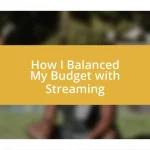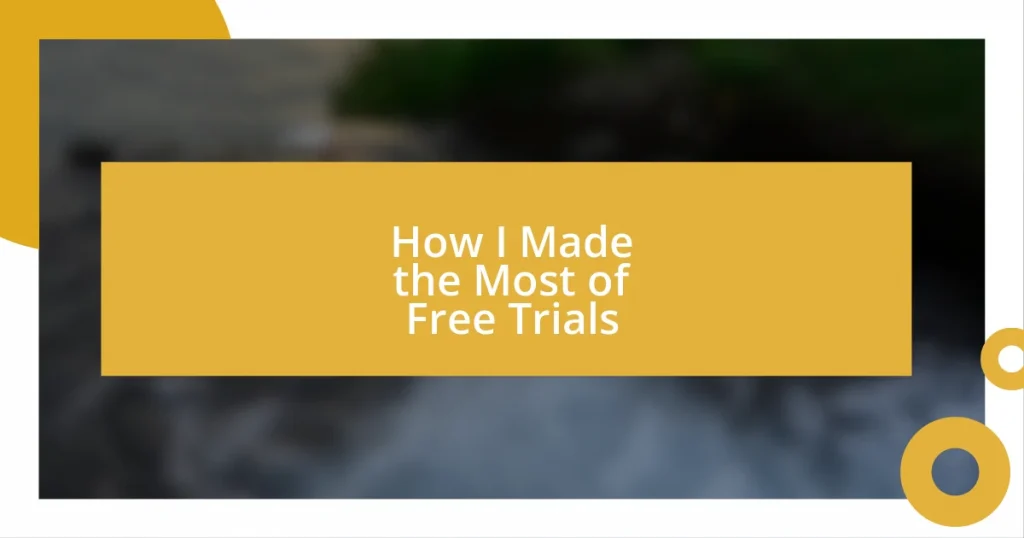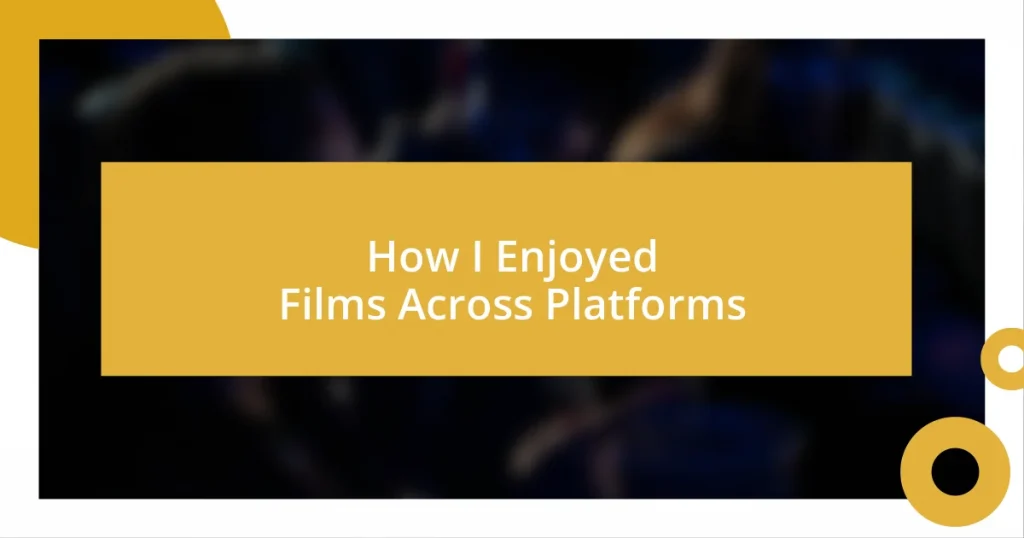Key takeaways:
- Free trials provide valuable exposure to products, helping users determine their fit and engage with the brand’s community.
- Choosing the right trial, setting clear goals, and utilizing additional resources enhance the overall experience and maximize benefits.
- Evaluating trial success involves assessing usage, personal growth, and long-term value, influencing decisions to transition to paid plans.
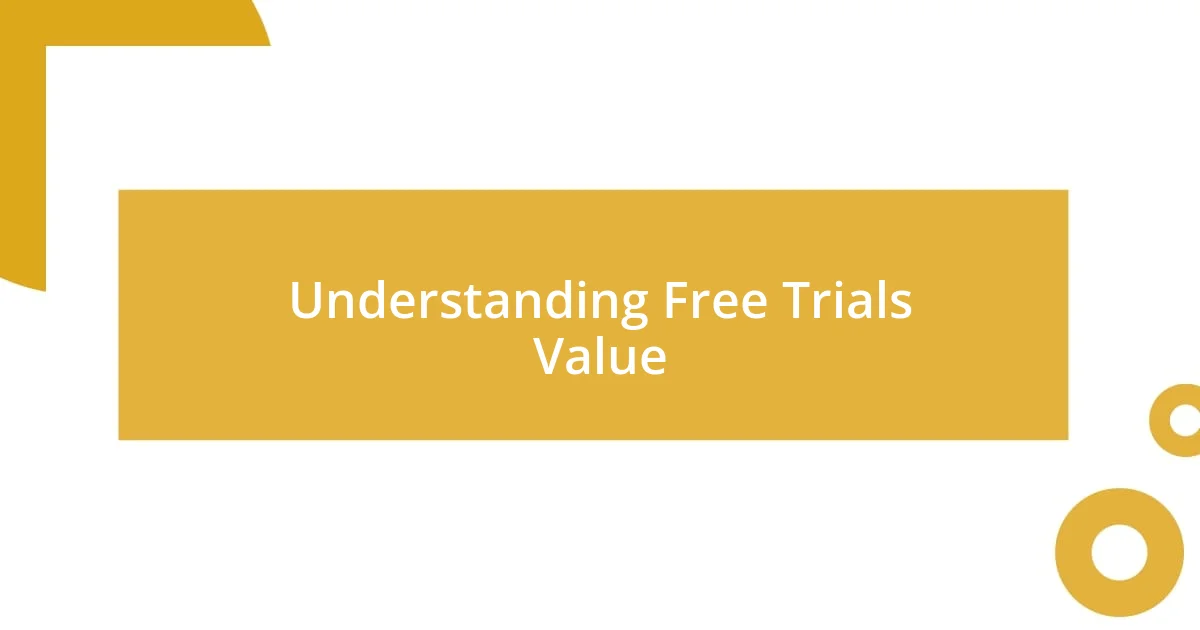
Understanding Free Trials Value
Free trials offer a unique opportunity to explore a product without committing financially. I remember the first time I used a free trial for a streaming service; it felt like I was opening a door to endless entertainment possibilities without any risk. Isn’t it liberating to know you can experience something fully before deciding if it’s worth your investment?
One of the most significant values of free trials is the chance to understand if a product genuinely meets your needs. I once signed up for a project management tool that promised to streamline my workflow. Within the trial period, I quickly discovered the features I could incorporate into my routine, and, surprisingly, those I found unnecessary. How often have you realized a product isn’t the right fit until you’ve had hands-on experience?
Additionally, free trials allow for a deeper connection with a brand. When I tried a new fitness app for a month, I didn’t just access workouts; I engaged with the community and received tailored advice. That emotional engagement made a lasting impact—do you think you’d value a product more after experiencing its community and support firsthand?
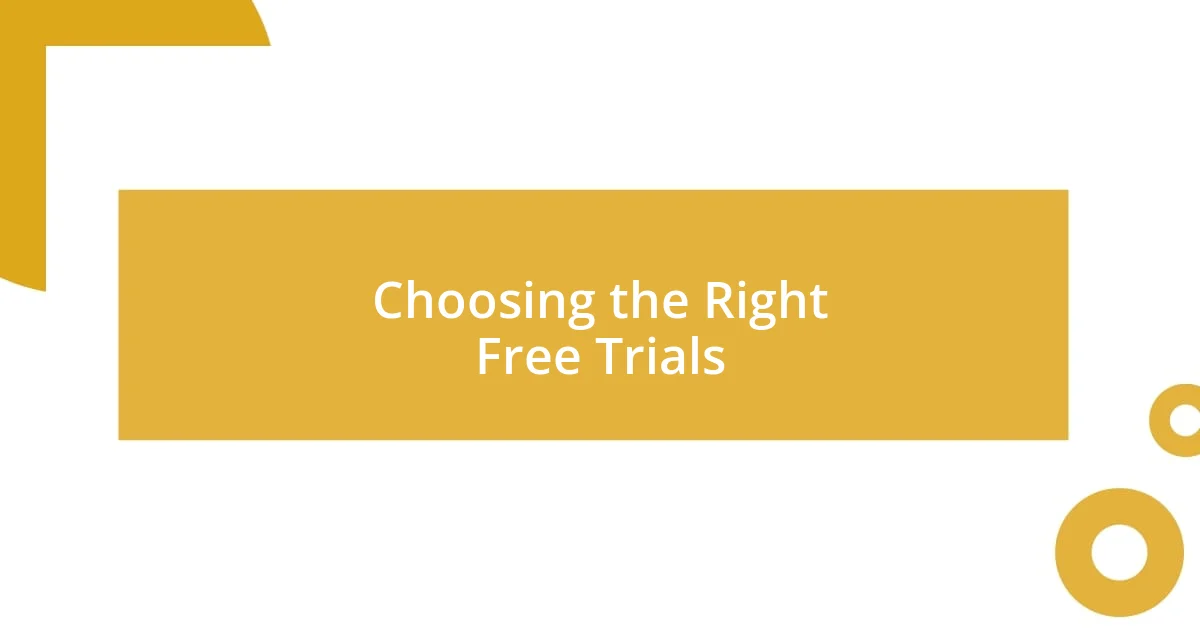
Choosing the Right Free Trials
Choosing the right free trials is essential to maximize the benefits you can derive from them. I think about it like picking a new book to read; you want something that resonates with your interests. I often start by researching which trials align with my current goals. For instance, if I’m looking for a fitness app, I would focus on trials that emphasize community interaction and tailored workouts. What features do you prioritize?
It’s also important to evaluate the trial duration. I once jumped into a software trial that lasted only a week, and it felt like I had to rush through everything. I realized that a longer trial period would have allowed me to explore and truly understand the product’s value. Trust me, having more time can make a big difference in your assessment.
Lastly, consider any additional content or services that come with the trial. Some platforms offer webinars or tutorials that can enrich your understanding. I was pleasantly surprised by a photography editing software trial that included free instructional classes. Not only did I get to test the software, but I also honed my skills during the process. Have you thought about how much extra value you could gain from complementary resources?
| Criteria | Example |
|---|---|
| Alignment with Goals | Fitness app focused on community |
| Trial Duration | Week-long trial feels rushed |
| Additional Resources | Software includes free tutorials |
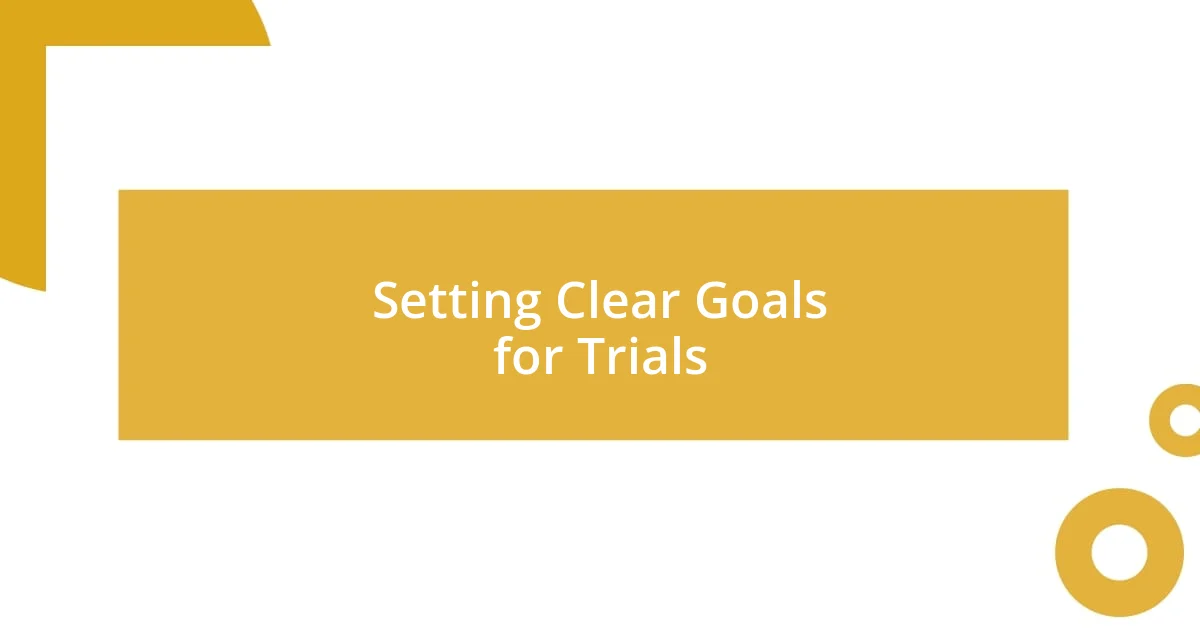
Setting Clear Goals for Trials
Setting clear goals for your free trials is crucial to ensure you extract the maximum benefit from them. When I first began exploring online learning platforms, I set a specific goal: to learn graphic design basics within a month. Having that focus helped me prioritize my time and navigate the platform selectively. It’s remarkable how having a definitive aim can transform a seemingly overwhelming experience into a manageable learning journey.
To help clarify your objectives, consider these questions:
- What specific skills or knowledge do I want to gain?
- How much time can I realistically dedicate each week?
- What features of the product must be useful to my purpose?
When I followed these guidelines, I found that I not only engaged more deeply with the trial but also felt more accomplished. Each small victory, like creating my first digital design, fueled my motivation. Don’t underestimate the power of setting clear goals; it brings purpose to your exploration.
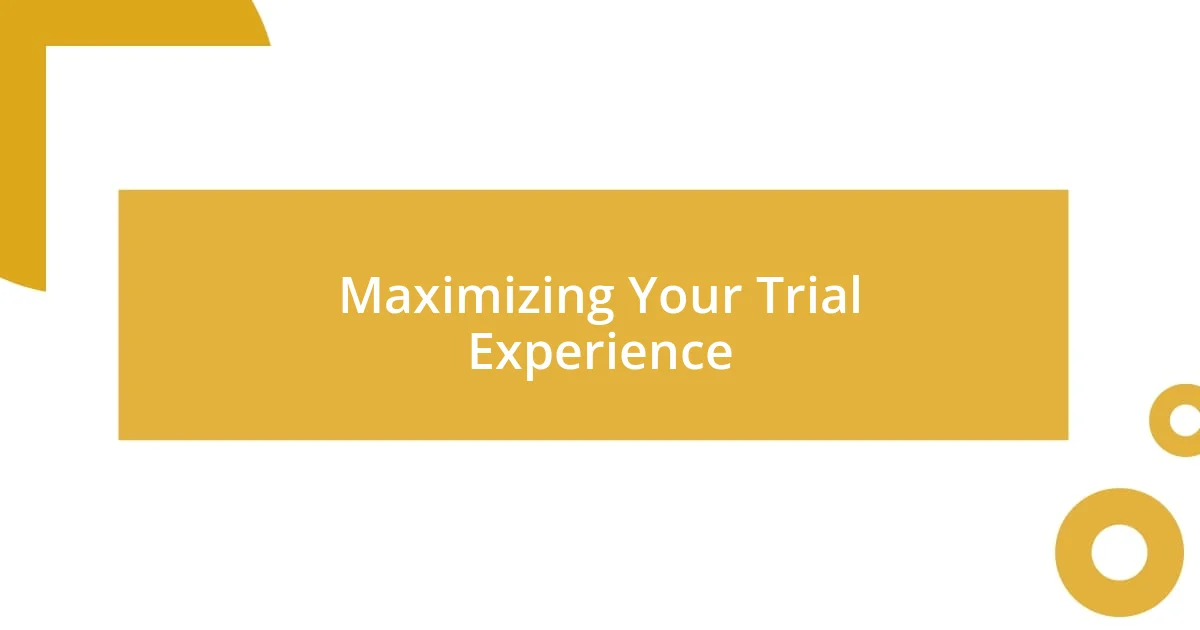
Maximizing Your Trial Experience
Making the most of your trial experience is all about diving in fully prepared. I remember when I tried a language-learning app; I committed to using it daily for at least 30 minutes. That routine not only built my vocabulary but also transformed learning into a fun part of my day. Have you ever thought about how consistency can amplify your results, even during a trial?
Engaging with the community can also enhance your experience significantly. During one trial of a project management tool, I joined their forums and ended up connecting with some inspiring users. Our discussions opened my eyes to features I hadn’t considered and provided real-life insights that enriched my understanding of the software. Isn’t it fascinating how connecting with others can reveal hidden gems within a product?
Lastly, don’t forget to document your experiences. I’ve found that jotting down what I liked and didn’t like about the software not only clarifies my thoughts but also helps me make more informed decisions later on. It’s like keeping a personal diary of my trial journey—looking back on those notes has proven invaluable when comparing options. How often do you reflect on your experiences to guide your future choices?
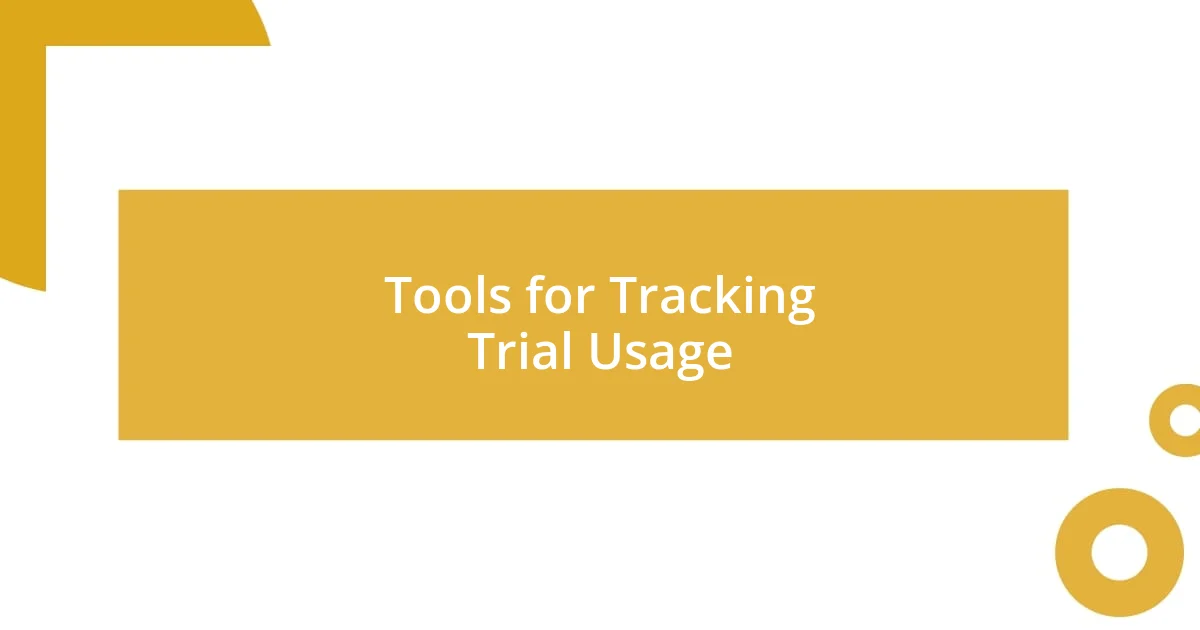
Tools for Tracking Trial Usage
When it comes to tracking trial usage, I’d recommend using tools like spreadsheets or specialized software. I remember creating a simple spreadsheet to log my daily usage and progress while trialing a fitness app. This helped me visualize my journey and stay accountable to my goals. Have you ever tried tracking your habits this way? The clarity it provides can be a game-changer.
Another great option is utilizing time-tracking apps. I used one during a 14-day trial of a project management tool and was amazed at how much time I spent on various features. It allowed me to identify what truly mattered to me, helping me prioritize my usage effectively. You might find that analyzing your time can lead to surprising insights, prompting you to focus on tools that best align with your needs.
Lastly, consider setting reminders to check in on your trial usage regularly. When I trialed a writing assist app, I scheduled alerts to evaluate how often I utilized its features. This practice not only kept me on track but also encouraged me to engage more deeply with the tool. Have you thought about how regular check-ins could boost your trial effectiveness? It often leads to uncovering hidden features that can enhance your overall experience.
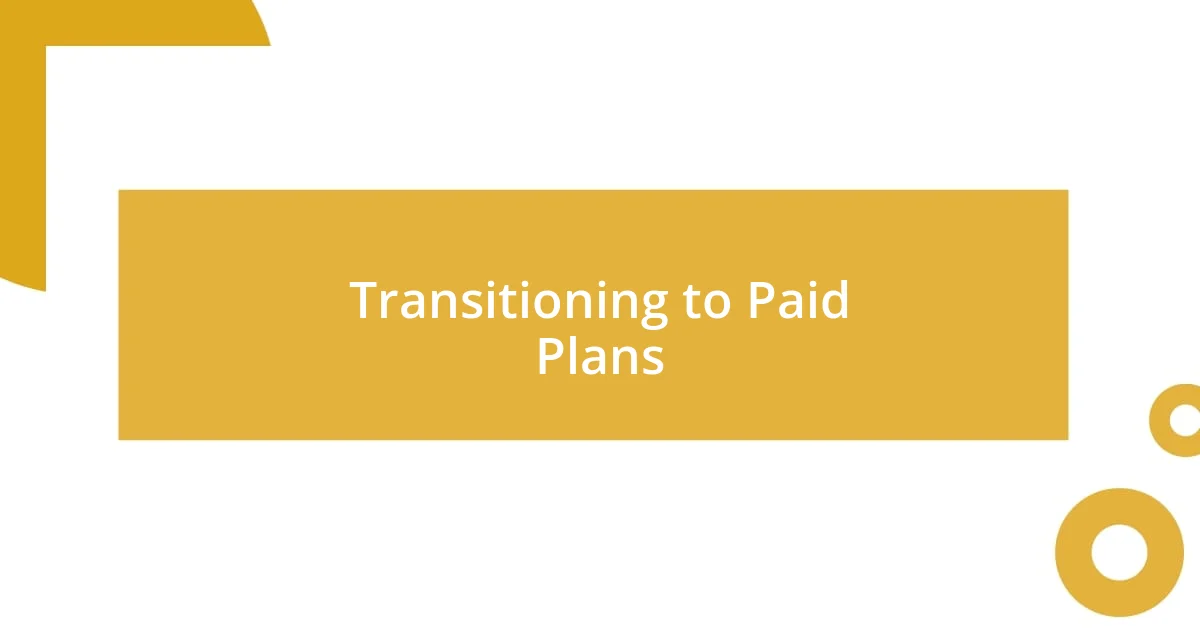
Transitioning to Paid Plans
Transitioning to a paid plan can feel like a leap of faith. I remember when I was on the fence about moving from a free trial of a graphic design tool to a paid subscription. I weighed the benefits against my budget, and in the end, the impressive features I had gotten used to during the trial made it clear that the investment was worth it. Have you ever wrestled with a similar decision?
One strategy I found helpful was assessing how much I used the tool in the trial period. During my experience with a music streaming service, I realized I was using it almost daily to discover new songs and create playlists. This made it easier for me to justify the cost; knowing that the service genuinely enriched my daily life made all the difference. What’s your method for determining value when transitioning to a paid plan?
It’s also essential to consider long-term benefits. For example, after a 30-day introduction to a coding platform, I felt empowered by the skills I had developed. The thought of losing access made it a no-brainer to sign up for an annual plan—its potential to impact my career was too significant to overlook. How do you envision the long-term gains playing out in your own decision-making process?
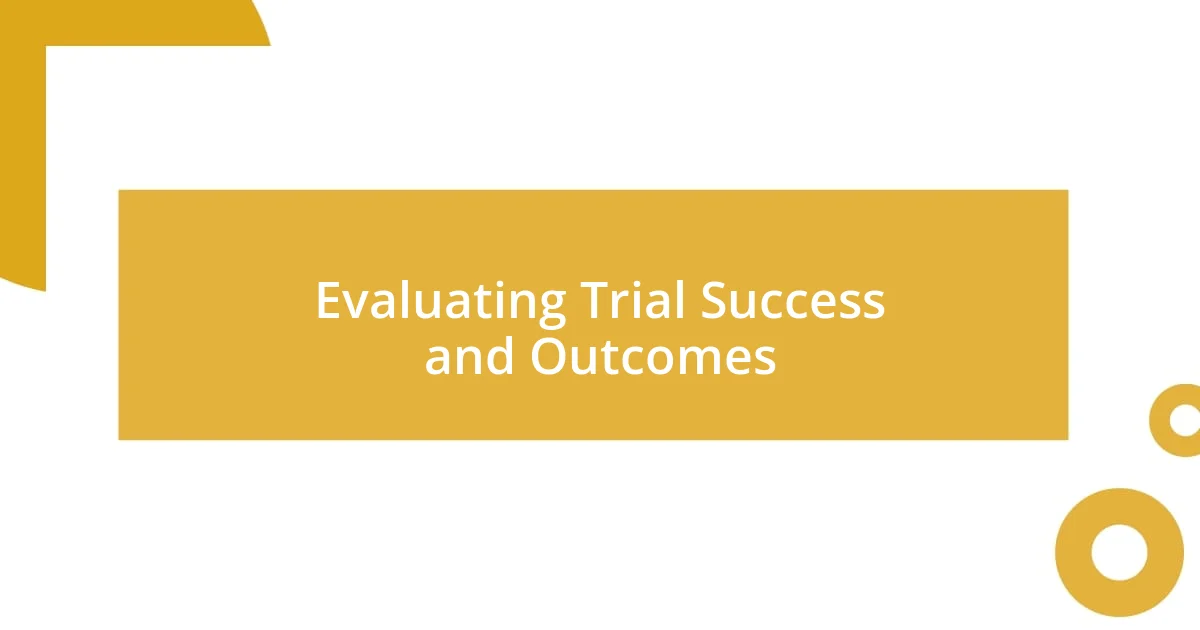
Evaluating Trial Success and Outcomes
Evaluating whether a trial was successful goes beyond just counting how many times you used the tool. For instance, when I trialed a language learning app, I found it crucial to assess my progress through quizzes and self-assessment. Did I feel more confident speaking the language by the end? That clarity empowered me to see the value beyond the surface.
It’s also important to consider how a tool fit into my routine. During a free trial of a meditation app, I noticed not only how often I accessed it but also how it contributed to my overall well-being. By reflecting on my mood and stress levels, I could connect the usage with tangible benefits, which prompted me to fully appreciate the trial experience.
Ultimately, success can often be measured by the knowledge gained. I remember diving into a project management tool and coming away with new insights on task prioritization. Evaluating my productivity and what strategies worked best for me helped shape my workflow. Have you thought about how these reflections could guide your decision to continue using a tool? They often lead to a deeper understanding of what you truly value in your digital toolbox.



